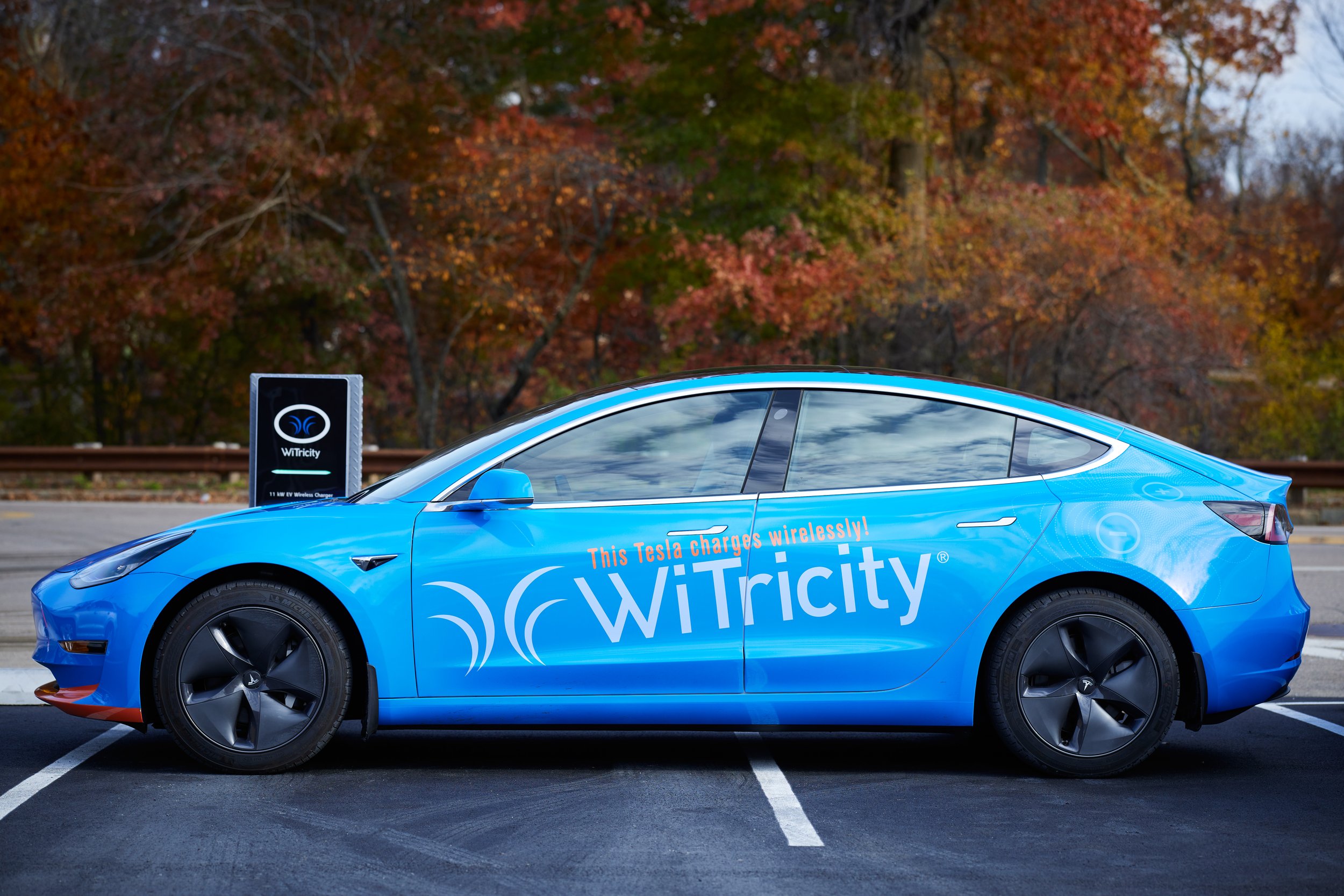No cord, no plug
Wireless charging is here
By Eric Cohen, WiTricity
Electric vehicle (EV) charging is about to become much more user-friendly with the introduction of commercial wireless technology. Gone will be the usual dirty and tangled cords. Gone will be the challenge of connecting those cords into your car in the dark and/or bad weather, and gone will be forgetting to plug in at all.
With wireless charging, drivers will simply pull into their usual parking space at home or work where the charger is mounted on the ground. Charging will begin automatically at the same efficiency ranges as today’s Level 2 chargers. With no moving parts, the wireless device operates indoors or out, at all temperatures, and functions safely in rain and snow.
Now for breaking the myths …
Myth: “Wireless charging isn’t real yet.”
It is real. At WiTricity, an Electric Vehicle Association business member, we recently upgraded a Tesla Model 3 to support our product. But, it’s not just in our workshop, it’s also factory installed in vehicles in Asia today. We’ve also been cheering on news about McLaren’s Speedtail, and see public buses taking advantage of the new technology. It’s not just an experiment, it’s here.
Myth: “It takes too long to charge.”
Nope. The wireless charging standard built on WiTricity’s patented solution charges in the same range as Level 2 plug-in chargers. And since you don’t worry about remembering to plug it in – you just park and go – it adds peace of mind as well.
Myth: “Plug-in charging is 100% efficient and wireless is way below that”
Remember, we’re dealing with electricity here, and it needs to be respected. Both wireless and plug-in chargers have functional blocks to protect your home and vehicle, and those blocks prevent 100% efficiency. Most Level 2 chargers are between 89-94% efficient, and so is the wireless charging built on WiTricity’s technology.
Myth: “Plugging in is a hassle”
It’s human nature to find easier, simpler solutions to things that may seem at the time to be “good enough.” (Indoor plumbing anyone?) But a simpler solution with no moving parts means a more reliable charge: no dealing with an armful of squirming toddler while trying to wrangle the cord, nothing to fumble in inclement weather, nothing to break or get stolen.
Myth: “It’s too much trouble to get the alignment just right”
Wireless charging for EVs isn’t like the inductive charging you might use for your toothbrush or phone, where the coils must align perfectly to get a charge. The standard based on WiTricity’s design uses magnetic resonance, which is relatively forgiving. So you just drive up, park, and walk away.
At WiTricity, we live and breathe EVs and look forward to talking with you—and learning from you—as we work together to accelerate transportation electrification.
Want to learn more? Sign up for the WiTricity newsletter.


